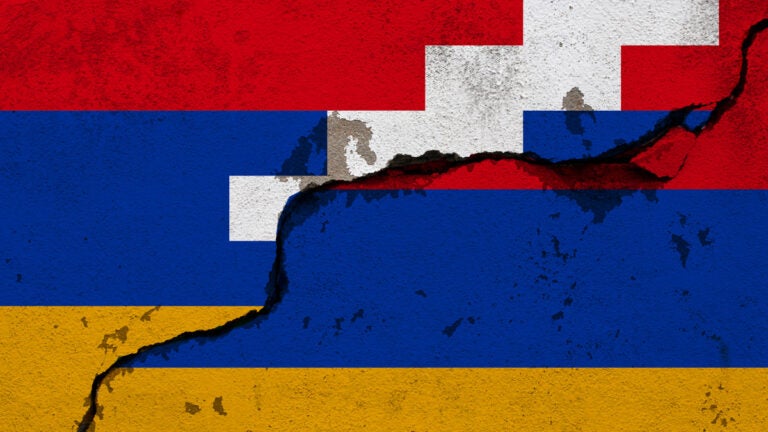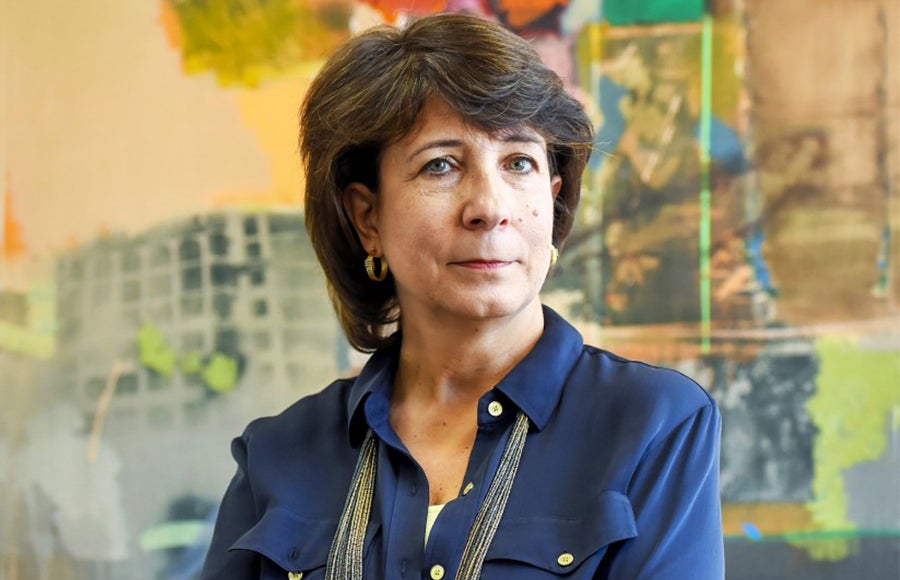
Armenian studies expert offers insight on the Nagorno-Karabakh conflict
The Nagorno-Karabakh Republic has been a point of conflict between Armenia and Azerbaijan since the early 20th century. The area, also called the Republic of Artsakh, sits between the two former Soviet republics in the South Caucasus region bordered by Iran, Turkey and the Russian Federation.
The majority Armenian population of Artsakh voted to become a part of Armenia shortly after the collapse of the Soviet Union in 1991, sparking a war that ended in 1994 without an official treaty, and with Artsakh remaining a part of Azerbaijan.
Decades of unrest, skirmishes, protests and diplomatic conflict erupted into open warfare between Armenian and Azerbaijani forces this fall and has continued since.
Salpi Ghazarian, director of the USC Dornsife Institute of Armenian Studies, answered questions about the conflict, what people in the United States can do to help and how a lasting peace might be established.
Though the Nagorno-Karabakh clash has been in the news, what might people not know about it?

Salpi Ghazarian leads efforts at USC Dornsife to understand the conflict in Nagorno-Karabakh. (Photo: Gus Ruelas.)
This is a conflict that is the outcome of imposed solutions — and the cautionary note is that imposed solutions don’t lead to lasting peace.
The ambitions of Russia and Turkey immediately following World War I resulted in trade-offs and a gerrymandering of sorts that placed majority Armenian-populated Karabakh not within the new Soviet Republic of Armenia, but rather within the new Soviet Republic of Azerbaijan. Seventy years of letter-writing by Azerbaijan’s Armenian minority to Moscow, asking to have their human, social, cultural rights protected, were left unanswered. In the meanwhile, both populations — Armenians and Azerbaijanis — lived together but on unequal terms.
The collapse of the USSR, with its promises of ‘openness’ and ‘restructuring,’ offered the opening for the Armenians of Karabakh to demand self-determination, the right to govern themselves. Azerbaijan’s military response led to years of fighting, many refugees on both sides, as well as a loss of territory by Azerbaijan.
For Azerbaijan, this is a war to regain territory and to return refugees. For Armenians, this is about defense of human rights and the fundamental right to govern themselves. Yet, they both have not managed to make the complex compromises that these aspirations require. In this last month, for Armenians this has become an existential struggle.
Is the current turmoil different from previous conflicts?
The current situation is very different in that, after 25 years of no-war, no-peace, this now is outright warfare.
What started as the Armenians of Karabakh defending themselves from the Azerbaijani army, with Armenia as support and security guarantor, has expanded to a war between two states and beyond. Turkey is providing strategic partnership, mercenaries from the Middle East and arms to Azerbaijan. The war is being waged without an apparent clear end game.
Azerbaijan’s statements indicate that the leadership was dissatisfied or frustrated with negotiations that proved unproductive. In fact, there have been mediated negotiations for two decades, and what made them hopeful was that none of the mediators — the U.S., Russia or France — came in with plans they wished to impose. They depended on the sides to identify their own political room to maneuver and offer concessions.
If these attacks were intended to weaken the Armenian side at the negotiating table, they are, ironically, simply serving to reinforce both sides’ intransigence. After violence and loss of this scale, even those who used to be the advocates for compromise and peace have become very entrenched, since there is no reciprocal trust.
Why is this situation important to people in the U.S. and in particular Southern California?
Los Angeles is home to many diasporas — including the Armenian diaspora. This is one of the two largest communities outside Armenia. Many Angeleno-Armenians’ roots go back to Armenia, from which they emigrated over the last three decades and where they still have family. Many in fact have vivid memories of the first war [in the 1990s] or even lost someone.
At USC, the connections are even more burning. We have students whose fathers have gone to fight or who have a parent or sibling serving as medical officers or offering logistical help. We know of one student who left classes, in the middle of the semester during the second week of the conflict, to go there and “do what he can.” Social media and easy communication have brought the realities of the war home minute-by-minute.
What actions might concerned Americans take to help alleviate the conflict?
Of course, the need for urgent humanitarian aid cannot be overstated. The need for the U.S. government to engage directly, in a meaningful way, remains crucial, as well. Some have said that had the United States not been missing in action these last few years, this situation may not have erupted in this extreme way, since both countries have good relations with Washington. That’s at the political level.
Of course, as with every other crisis situation, the need for understandable, relevant, verified information is paramount. There is an information war that is being conducted together with the military operation. In global terms, this conflict has the potential of becoming a serious regional explosion, involving Iran as well as Russia and Turkey. So, the engagement of the U.S. media and academics and other specialists is essential to understanding not just the conflict, but also external perspectives.
What are some things the Institute of Armenian Studies is doing?
In our work with students and with the media, we are framing the discussions in a global context because all of the issues in this conflict are the same fundamental challenges we face around the world — arbitrary borders, human rights, sustainability, resource sharing, conflict resolution and management.
With students, we’ve held several online conversations offering information as well as mental health support. Many are trying to make sense of what’s going on by pivoting their assignments to delve deeper into this conflict and its many aspects. Others are unable to attend class, worried about relatives in Armenia, and we’re helping them work with their instructors.
My colleagues and I have been working with media from around the world. They have benefited from the Institute’s Focus on Karabakh portal, which is a unique and invaluable resource.
Our Deep Dive series, which is a series of conversations that take place every Friday at noon, has been viewed or heard more than 20,000 times.
What do you see as a path to peace in the region?
Just this weekend, I read in the Financial Times: “People protect what they love, they love what they understand and they understand what they’re taught.” The path is complicated because the lack of democracy in Azerbaijan and stability in the whole region over these 30 years has contributed to a hardening of positions and a deepening of ignorance and misunderstanding. Education everywhere has been one-sided and not driven by a peace agenda. At the same time, the general global instability in international relationships coupled with the ambitions and competition among the regional powers has completely transformed the situation and thrown new obstacles on the path to peace.
There are many more trade-offs and calculations on the table now. The simple, easy, inarguable first step, however, is that there must be a cessation of hostilities.